
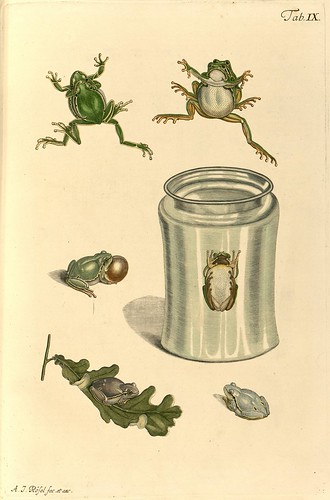

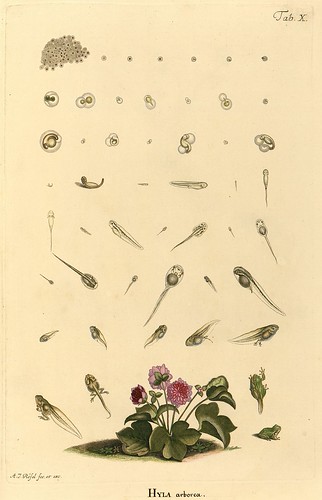
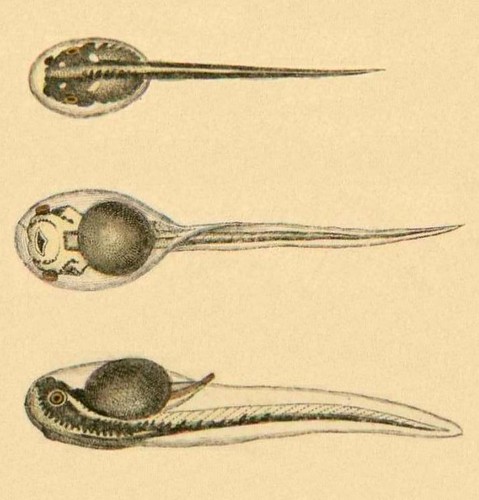

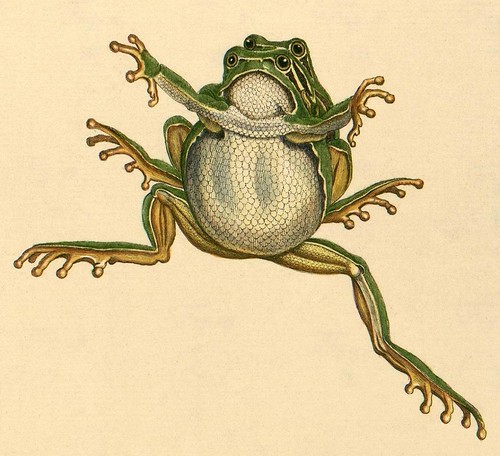
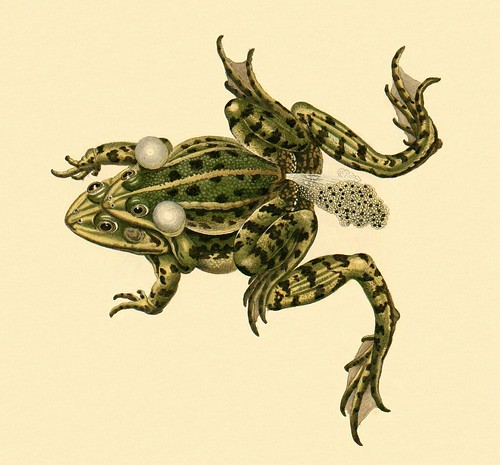
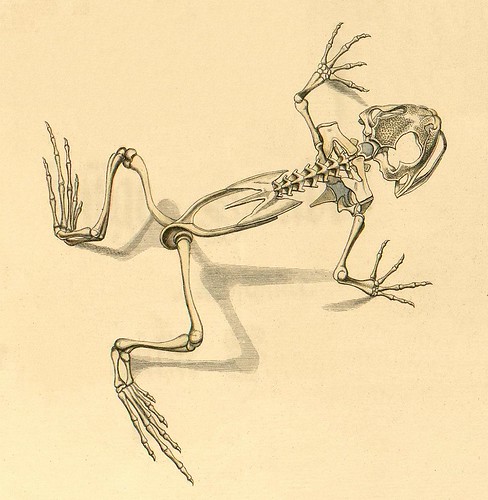
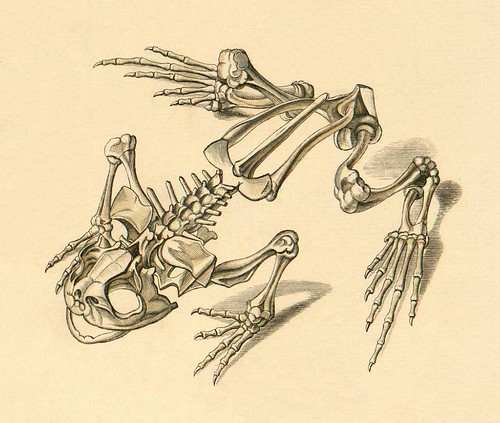
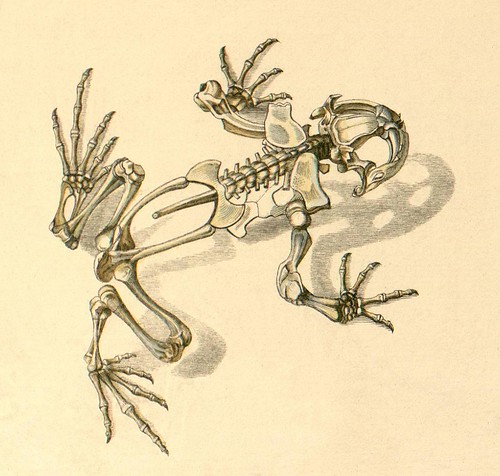




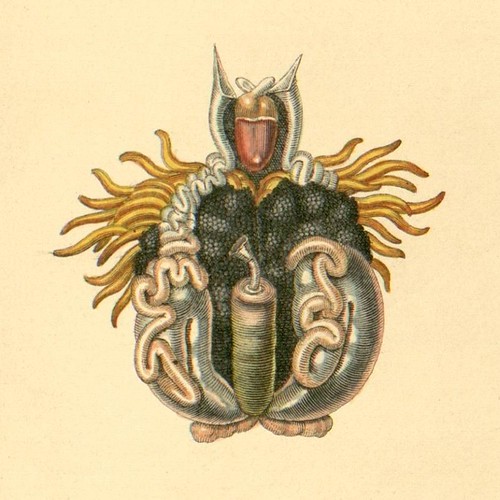

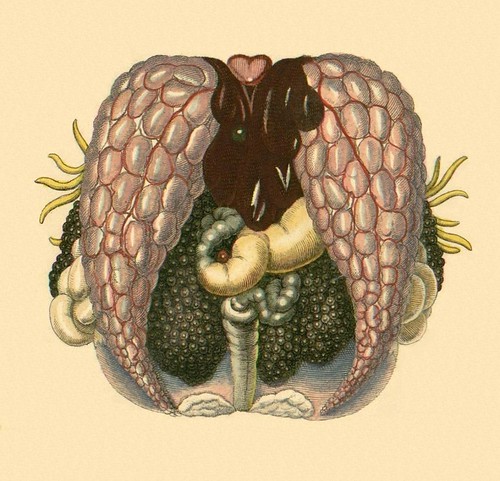
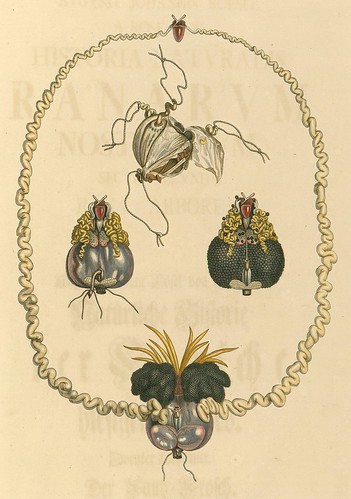
August Johann Rösel von Rosenhof (1705-1759) was a German descendent of Austrian nobility and showed an early aptitude for painting. Following an apprenticeship with his artist-uncle and further study at the Academy of Nuremberg, Rösel obtained an appointment at the royal court in Copenhagen painting portraits and miniatures.
Two years later, Rösel fell ill during the return trip to Nuremberg. He suspended his journey and spent a month recuperating in Hamburg. As chance would have it, a copy of Maria Sybilla Merian's amazing natural science book, 'Metamorphosis Insectorum Surinamensium' [previously], was given to Rösel during his convalescence and it had a profound influence over the direction of his career.
Rösel was so enchanted by Merian's exquisite drawings that he began to study the insects, reptiles and amphibians of Germany in his spare time away from a successful portrait painting business. He collected specimens and observed the development of the organisms through the various stages of their life cycles and he made detailed notes accompanied by precise sketches of his observations.
With the release in 1740 of his renowned work on insects, 'Insecten-Belustigung', Rösel basically established himself as one of the founding patriarchs of German entomology.
Between 1753 and 1758, Rösel published his classic treatise on frogs in instalments. Regarded as one of the most beautiful natural science books on amphibians ever produced, 'Historia Naturalis Ranarum Nostratium' documented the full egg-to-tadpole-to-frog developmental stages for the first time. It therefore occupies an esteemed position in the literature of batrachians (frogs and toads) and, indeed, in the history of science.
Sadly, Rösel suffered a stroke before he was able to publish a third work on lizards and salamanders, but his notes served as a source for a number of species descriptions by Linnaeus. Rösel has, therefore, an impeccable record in publishing, with both of his works considered artistic and scientific triumphs. He holds the further distinction, just by the by, for being the first person to observe and describe amoeba (Proteus animalcule as it was originally known), which he discovered late in his life.
- The images above are mostly (doctored*) details from plates out of 'Historia Naturalis Ranarum Nostratium', hosted by the Universities of Strasbourg Digital Old Books site (click on 'See digitized document' followed by the folder icon top left after loading the book). As usual, they have flawless and enormous image files available.
- Alternatively, Herplit have a quick 'n brief set of plates from 'Ranarum Nostratium' in addition to biographical details.
- Antiquariaat Junk quotes some reviewer commentary about 'Ranarum Nostratium'.
- Amphibiaweb.
- There are numerous worthwhile program/image/video links searching on virtual frog dissection.
- August Johann Rösel von Rosenhof at Wikipedia.
- Previously in a general sense.
- *Subjects may have been flipped and combined with details from other plates, the colour and/or brightness may have been enhanced and the backgrounds were cleaned and/or manipulated to one extent or another. Nothing too overboard.



















2 comments :
I wonder who believed that toads had a jewel in their heads, and when. And how seriously they believed it.
wow, exquisite images.. thank you peacay! so cool to see images like these close up - the little details like tadpole's mouth, the jewel-like symmetry of the organs...
Post a Comment
Comments are all moderated so don't waste your time spamming: they will never show up.
If you include ANY links that aren't pertinent to the blog post or discussion they will be deleted and a rash will break out in your underwear.
Also: please play the ball and not the person.
Note: only a member of this blog may post a comment.